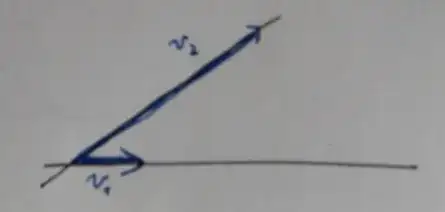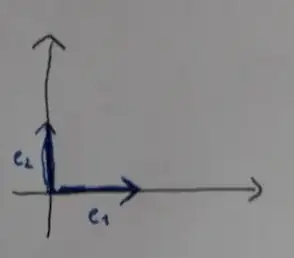It seems to me that the basic confusion is that you identify $\mathbb{R}^2$ too strongly with the space of geometric vectors in the plane.
These spaces are not the same. Geometric vectors are simply “arrows”, while vectors in $\mathbb{R}^2$ are nothing but pairs of real numbers: $(x,y)$ where $x \in \mathbb{R}$ and $y \in \mathbb{R}$.
So when you ask what $(1,0)$ really is, the answer is that it's the pair of real numbers whose first member is the number $1$ and whose second member is the number $0$. That's all!
On the other hand, it's true that if you pick a basis for the space of geometric vectors in the plane (that is, two linearly independent “arrows”), then any geometric vector can be represented by a unique element $(x,y)$ in $\mathbb{R}^2$ (where $x$ and $y$ are the coordinate of the vector with respect to the chosen basis). But the correspondence between geometric vectors and elements in $\mathbb{R}^2$ of course depends on the choice of basis.
So far it's pretty easy, but many students become confused when one does the same thing in the space $\mathbb{R}^2$ itself.
Namely, if you pick a basis for $\mathbb{R}^2$ (that is, two linearly independent pairs of numbers), then any element $(a,b)$ in $\mathbb{R}^2$ can be represented by a unique element $(x,y)$ in $\mathbb{R}^2$. And $(x,y) \neq (a,b)$, unless the basis is the standard basis consisting of the vectors $(1,0)$ and $(0,1)$. So each vector in $\mathbb{R}^2$ is represented by some other vector in $\mathbb{R}^2$.
One way to (possibly) reduce the risk of confusion is to use column matrices for coordinates, so that if $\mathbf{v} = x_1 \mathbf{e}_1 + x_2 \mathbf{e}_2$, then you write the coordinate vector for $\mathbf{v}$ (with respect to the basis consisting of the vectors $\mathbf{e}_1$ and $\mathbf{e}_2$) as the column matrix
$$
\begin{bmatrix} x_1 \\ x_2 \end{bmatrix}
,
$$
rather than as the pair $(x_1,x_2)$.
For example, if we do this in $\mathbf{R}^2$ with the basis $\mathbf{f}_1=(1,1)$ and $\mathbf{f}_2=(2,3)$, then the vector
$$
\mathbf{v} = (12,17) = 2(1,1) + 5(2,3) = 2 \mathbf{f}_1 + 5 \mathbf{f}_2
$$
has the coordinate vector
$$
\begin{bmatrix} 2 \\ 5 \end{bmatrix}
$$
with respect to that basis.
But if we take the standard basis, $\mathbf{e}_1 = (1,0)$ and $\mathbf{e}_2 = (0,1)$, then the same vector
$$
\mathbf{v} = (12,17) = 12(1,0) + 17(0,1) = 12 \mathbf{e}_1 + 17 \mathbf{e}_2
$$
is represented by the coordinate vector
$$
\begin{bmatrix} 12 \\ 17 \end{bmatrix}
$$
instead.
In both cases, $\mathbf{v}$ itself really is just the number pair $(12,17)$, but its coordinate vector depends on which basis you use.

